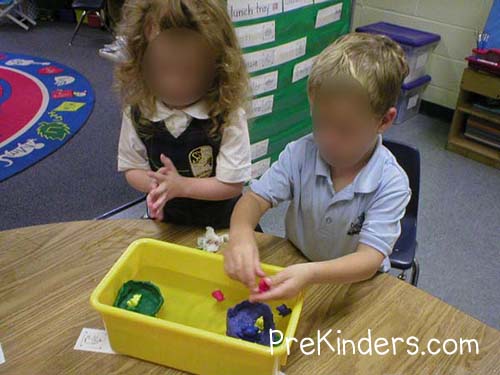
Scientific Objective: Exploring Density
Materials Needed:
Modeling clay (not play dough, not earth clay)
Small tubs (enough for every pair of children)
Bear counters
Access to water
Slice of bread
Towels
Set Up:
Before the experiment, fill the tubs of water (about halfway).
Procedure:
Give each child a ball of clay and ask them what they think will happen if you drop it into the water. Have children drop a ball of clay into the water to see if it will float or sink (it will sink). Next, ask them to form a boat with the ball of clay. What will happen to their boat if they put it in the water? Will it float or sink? Have each child try it. Most of the boats will sink. Ask the children to take the boat out of the water and keep trying to form it in different ways until they make a boat that floats. Tell children they need to press the clay flatter to give their boat less density so that it will float. Once they have a boat that floats, have them try putting animal counters in the boat one by one, to see how many the boat will hold without sinking. You can also try making boats with aluminum foil.
Note: I have done this activity inside the classroom, and it worked out fine as long as we had plenty of towels available. However, I prefer doing this activity outside.
Extension:
Reinforce this concept by placing a slice of bread on top of the water. It will float. Then take the bread and wad it up into a ball. Place it in the water again. It sinks.
Find more Transportation Activities for Pre-K on the category page.
